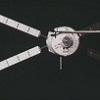Molten metal may not be what you want in your smartphone battery, but it turns out to work great for larger grid-scale batteries. MIT engineers have created devices that can provide up to 20 times as much current as lithium-ion batteries with the same electrode area, according to New Scientist.
The new battery simply consists of tanks filled with three liquid layers kept at 700 degrees C. Molten magnesium sits on top, and antimony sits on the bottom. The middle layer consists of a compound mixture of the two outer layers.
A battery as large as a shipping container could deliver a megawatt of electricity, or enough to power about 10,000 100-watt light bulbs for several hours. Its cheaper material costs compared to lithium make it a more cost-effective candidate for scaling up the power grid.
Some utility companies and cities have already turned to sodium sulphur batteries as backup power that can ease reliance on the aging transmission grid — the Texas town of Presidio recently charged up the largest battery of this type in the US But the molten metal battery technology could provide part of a newer energy infrastructure that supports a growing variety of renewable energy sources. — Jeremy Hsu
[via New Scientist]
Popular Science has been a leading source of science, technology and gadget news since 1872. With up-to-the minute latest space news, insightful commentary on the new innovations and concept cars ...if it's new or future technology you'll find it at popsci.com.au.
WW Media - Popular Science © 2010
Technology - DIY - Videos






